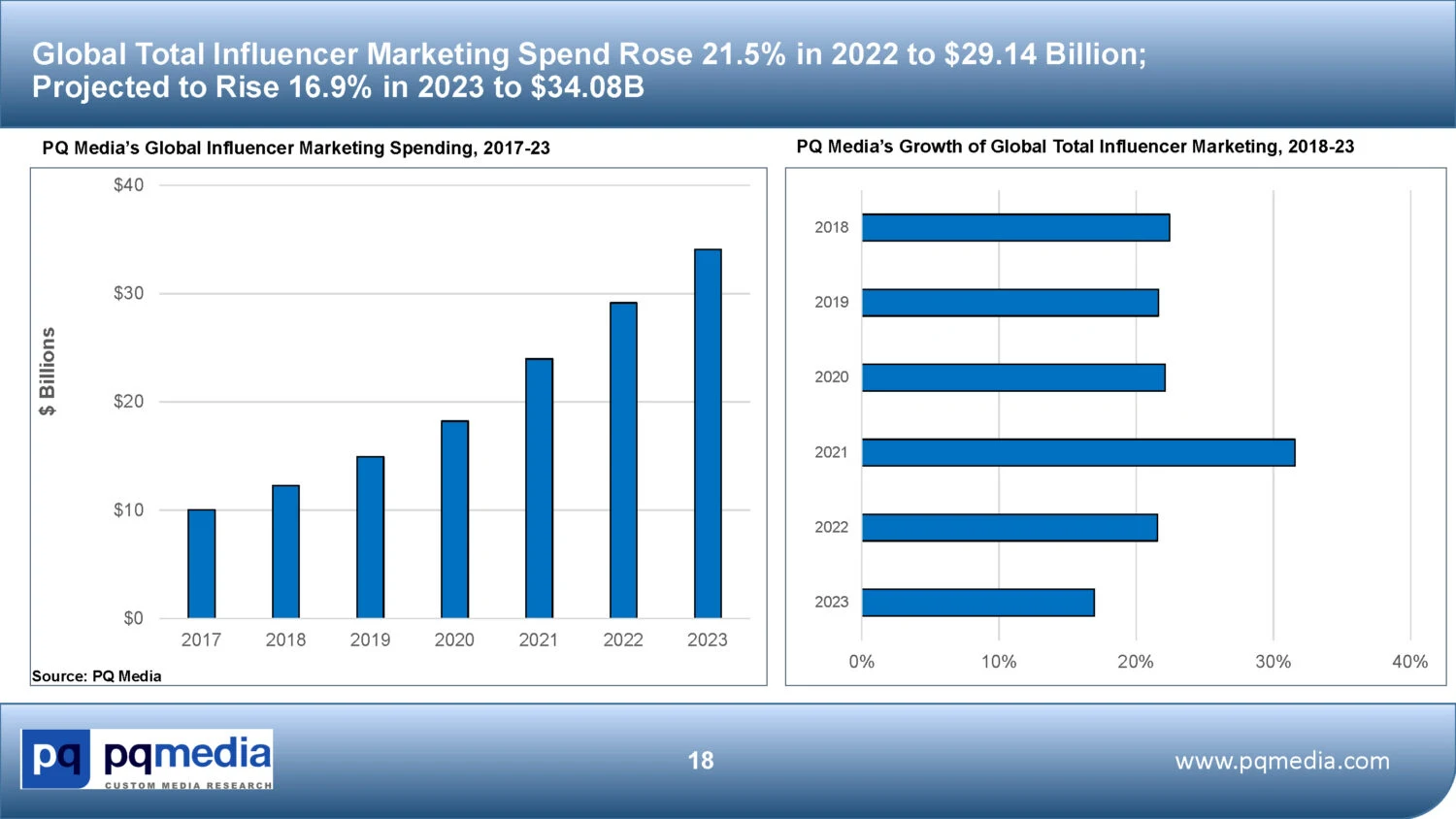The world’s influencer marketing economy has been in focus for a number of reasons. One of the biggest ones of them all has to do with the mere fact that the presence that influencers have on social media isn’t slowing down soon.
It’s no wonder why leading brands are going after the best of the best, trying to negotiate reasonable deals that they feel can help them grow and enhance their reach in the market.
But the question is how does the influencer marketing economy fair against yesterday and what forecasts are experts predicting for tomorrow?
The economy’s stats showed how it expanded by 21.5% in the past year and now it’s on track to grow more. Predictions for this year are close to 17%, not to mention the massive $34 billion outlined in spending.
America alone represents more than 75% of the global influencer marketing economy. And that’s further expected to rise on the share. The increase would be close to 17.6% in 2023 alone to a whopping $26 billion, as per a yearly update added to the latest PQ Forecast.
But where is the expansion coming from? It seems to be related to the uprising of both small and large-scale influencers as per PQ. They are both getting the attention of brands from a huge figure of social media apps, including those aimed at the younger lot, allocated more toward their interests in the world of fashion, sports, and more interesting domains.
The term designated for this type of marketing is ‘word of mouth’ and it’s not used a lot these days. We’re seeing it get replaced by another big term called influencer marketing. This cited a huge change in the manner by which brand marketers make use of individuals to influence targeted others.
When this is executed positively, influencer marketing becomes truly valuable for marketing campaigns as it assists brands in enhancing the whole reputation they have on social media, thanks to the involvement of content being of the highest quality and also to further enhance sales.
But it’s not just the spending in the US that has increased for social media influencers. The trend is moving upward globally too and that’s worth mentioning because this is just the beginning of some great things.
Read next: The Retail Sector is Set for $13.8 Billion Loss on Black Friday
It’s no wonder why leading brands are going after the best of the best, trying to negotiate reasonable deals that they feel can help them grow and enhance their reach in the market.
But the question is how does the influencer marketing economy fair against yesterday and what forecasts are experts predicting for tomorrow?
The economy’s stats showed how it expanded by 21.5% in the past year and now it’s on track to grow more. Predictions for this year are close to 17%, not to mention the massive $34 billion outlined in spending.
America alone represents more than 75% of the global influencer marketing economy. And that’s further expected to rise on the share. The increase would be close to 17.6% in 2023 alone to a whopping $26 billion, as per a yearly update added to the latest PQ Forecast.
But where is the expansion coming from? It seems to be related to the uprising of both small and large-scale influencers as per PQ. They are both getting the attention of brands from a huge figure of social media apps, including those aimed at the younger lot, allocated more toward their interests in the world of fashion, sports, and more interesting domains.
The term designated for this type of marketing is ‘word of mouth’ and it’s not used a lot these days. We’re seeing it get replaced by another big term called influencer marketing. This cited a huge change in the manner by which brand marketers make use of individuals to influence targeted others.
When this is executed positively, influencer marketing becomes truly valuable for marketing campaigns as it assists brands in enhancing the whole reputation they have on social media, thanks to the involvement of content being of the highest quality and also to further enhance sales.
But it’s not just the spending in the US that has increased for social media influencers. The trend is moving upward globally too and that’s worth mentioning because this is just the beginning of some great things.
Read next: The Retail Sector is Set for $13.8 Billion Loss on Black Friday

